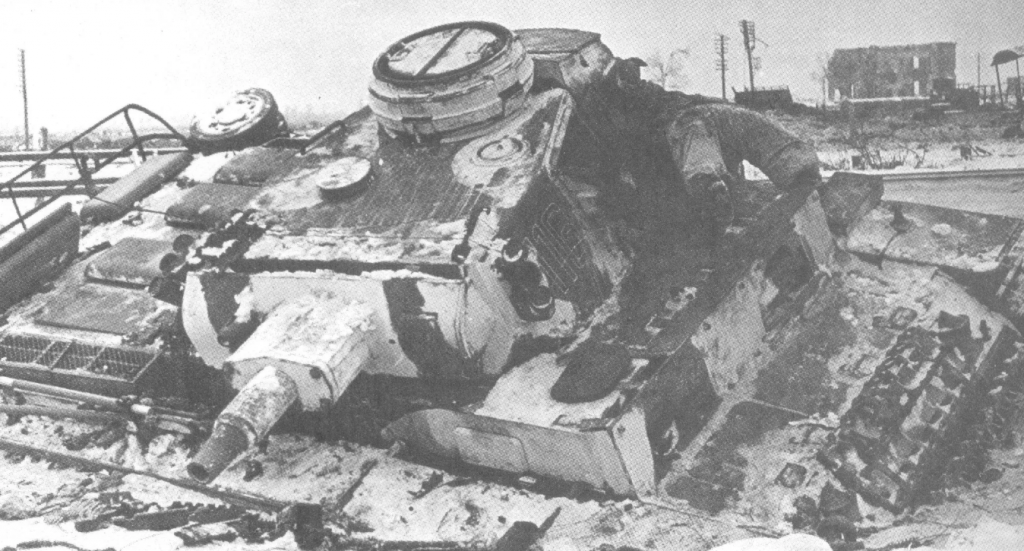Blockade of Leningrad is Broken- January 18, 1943
On January 18, 1943, the troops of the Leningrad and Volkhov fronts broke through the blockade of Leningrad. Although the military success achieved was rather modest (the width of the corridor connecting the city with the country was only 8-11 kilometers), the political, material, economic and symbolic significance of breaking the blockade cannot be overestimated. In the shortest possible time, the Polyany-Shlisselburg railway line, the highway (after the war became part of the Murmansk highway, the modern P21 highway) and several bridges across the Neva were built. On February 7, the first train from the “mainland” arrived at the Finland Station. Since mid-February in Leningrad food supply norms established for other industrial centers of the country began to operate. All this radically improved the situation of the inhabitants of the city and the troops of the Leningrad Front.

Breaking the blockade was a turning point in the battle for Leningrad. Even the theoretical possibility of an assault on Leningrad by German troops was finally removed – the initiative in the North-West direction finally passed to the Soviet troops. In this situation, the Supreme Command Headquarters considered it possible not only to build on the success achieved and restore control over the Kirov Railway, but also to carry out an even larger-scale operation – to completely lift the blockade of Leningrad and liberate the entire Leningrad region. However, Operation Polarisended in failure. Soviet troops near Leningrad failed to develop an offensive, defeat the German Mginsko-Sinyavinskaya grouping, ensure a strong railway connection between the city and the country, and also push the enemy back to a distance that excludes artillery shelling. It was only in January 1944 that Leningrad was fully liberated from the enemy blockade during the Leningrad-Novgorod operation.

By January 18, the troops of the Leningrad and Volkhov fronts were separated by only a few kilometers. The German command, realizing the seriousness of the situation, allowed the units remaining in the encirclement in the Shlisselburg and Lipka areas to make their way south to Sinyavin, for which the “Hüner group” had to hold Workers’ settlements No. 1 and No. 5 until the last opportunity.
January 18, 1943, at 9:30 am, the 1st separate rifle battalion of the 123rd separate rifle brigade of the 67th army of the Leningrad Front, led by the deputy commander for political affairs, Major Melkonyan, senior lieutenant Kalugov, sergeant Anisimov, met with units of the 372nd division of the 2nd th shock army of the Volkhov Front, led by Major Melnikov and the commander of the 440th reconnaissance company, Senior Lieutenant Ishimov, on the eastern outskirts of Workers’ Village No. 1. At 10:30, they were joined by the commander of the 372nd Infantry Division, Colonel Radygin, who took on further command.
On January 18, German troops launched a counterattack from the area of Workers’ Village No. 5 against the 136th Infantry Division to ensure a breakthrough of their encircled units. The attack was repulsed and the 136th Rifle Division, pursuing the enemy, broke into Rabochesky Settlement No. 5, where, before 12:00 pm, a group of senior lieutenant Bryteshko, Sergeant Tregub and Red Army soldier Trunov met with the first rifle battalion under the command of Lieutenant (later Major ) Noskova A. V. 424th Infantry Regiment of the 18th Infantry Division of the 2nd Shock Army. A little later on the same day, formations of the 86th Infantry Division and a battalion of armored vehicles of the 61st Tank Brigade completely cleared Shlisselburg from the enemy, and at the end of the day, the advanced units of the 34th Ski Brigade established contact with the 128th Rifle Division and the 12th Ski Brigade of the 2nd Shock Army, which finally took Lipki.
Thus, on January 18, 1943, the blockade of Leningrad was broken.
However, the common front of the 67th and 2nd shock armies was not yet dense enough and a significant part of the encircled German group (about 8,000 people), having dispersed and abandoned heavy weapons, broke through Workers’ settlement No. 5 to the south and by January 20 left the encirclement in the Sinyavino area. Retreating, the German troops took up a pre-prepared position on the line of the 1st and 2nd towns – Workers’ settlement No. 6 – Sinyavino – the western part of the Kruglaya grove, where the SS police division, the 5th mountain rifle and the 1st infantry divisions were already entrenched. Soon, the command of the 18th Army additionally deployed units of the 28th Jaeger, 11th, 21st and 212th Infantry Divisions to this area.
Non the less this operation now allowed another passage of food and supplies to the besieged city of Leningrad where by this date over half a million civilians died of starvation and German shelling.













